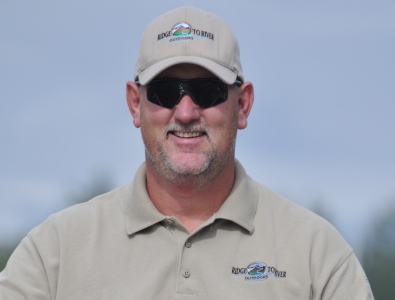

I remember the first electronics (fish finder) I ever saw. learned or used as a kid was a Humminbird Super Sixty. My Dad showed me how to use it and I was amazed it worked.
Over the years I have had several different boats and I have always had electronics on them. I am certainly no “guru” when it comes to electronics, but I do know how to use them well. When I think back to the technology fish finders were when I started using them and what we use now, I am completely blown away! Who would have thought we could have side imaging and down imaging with such clarity, you can actually see the spokes of a bicycle wheel.
All of that said, I learned a very long time ago two important lessons about fish finders. One of which is the most valuable lesson for any electronics. Which I will get to. These two lessons have helped me become very proficient at using my electronics for fishing, navigation and more.
When I am fishing clients, they are almost always interested in the electronics, whether we are fishing in the river, a lake or Puget Sound. “What do you see?”, “Do you see fish?” So I will take a minute to show them what I see and why. Regularly, I get clients who state they use the fish icon on their own electronics. I show them in real time why they should not use the fish icon and almost always they say they will stop using it. Moreover I show them the importance of the sensitivity setting.
Sensitivity
Proper use of the sensitivity adjustment is a very valuable lesson for anglers to learn. On most all electronics of any quality there is a “sensitivity” adjustment. One of my first initial adjustments is to turn my sensitivity up all the way. This makes the screen very cluttered. Then I start slowly turning down the sensitivity. I find a setting that allows me to see more fish arches, but I still have a little clutter on the screen. Try this yourself. When you find that setting, you will see fish arches you did not see before. Make a note of your setting. Then dial it down a little more so you do not have as much clutter on the screen. You will quickly see that fish arches you saw a minute ago, are now gone.
When you get the sensitivity setting just right, you will be able to see what is below very well. In this first image I am trolling for Coho salmon. I had been marking some fish at the 72 foot mark, which is evident by the fish arch in the picture. You will also see the downrigger ball, which is the heavy line just below the fish arch. The thin line just above the down rigger ball line, is my mainline and flasher. (I clip my downrigger snaps in about 3 feet above my downrigger ball).
If you use down riggers for controlled depth fishing, the sensitivity adjustment on your fish finder will help you see exactly where your downriggers are. That way you do not have to worry about figuring out the blow back angle.
In this second picture we are fishing relatively shallow water for flounder (fluke). You know you have your sensitivity set right when the clients drops down a 3 ounce lead to the bottom and your fish finder can pick it up on the screen traveling to the bottom.
Most Valuable Lesson About Electronics
While the sensitivity setting is one of your most valuable settings you will use, the most valuable lesson I have ever learned about electronics, is to actually learn how to use the electronics. I work with many folks in buying choices for new fish finder electronics and they have the impression it will work immediately after installation. Well yes and no.
Yes, the electronics will work. However, you have to tweak them to your fishing needs. That said, manufacturers come out with new products all the time. The store display makes it look like it is ready to go out of the box, unfortunately this just is not true. Take a day or two to go out on the water and just explore your electronics. I can tell you that when I installed the Humminbird Solix 15 Chirp Mega SI, I spent a week getting my electronics dialed in. Now you probably do not need to go to that extreme, but I have to rely on my electronics. That said, you should spend at least a day on the water and learn your electronics. Do not focus on fishing. Focus on using your electronics proficiently.
It can be very frustrating to get on the water fishing and your electronics are not dialed in and you are getting aggravated trying to figure something out, all the while trying to fish. Fish finders have made such huge advances in technology over the years. New technology requires some effort and time to dial it in. When you do get it dialed in and know how to use your electronics, it will pay dividends in the end.
My Choice in Electronics
I have literally used all the brands on the market. My choice in electronics is Humminbird. I find it very reliable with amazing features and images. Take a look for yourself in person. Visit your local Cabela’s, Bass Pro Shops or local Humminbrid retailer to learn more.
Good luck on the water.






